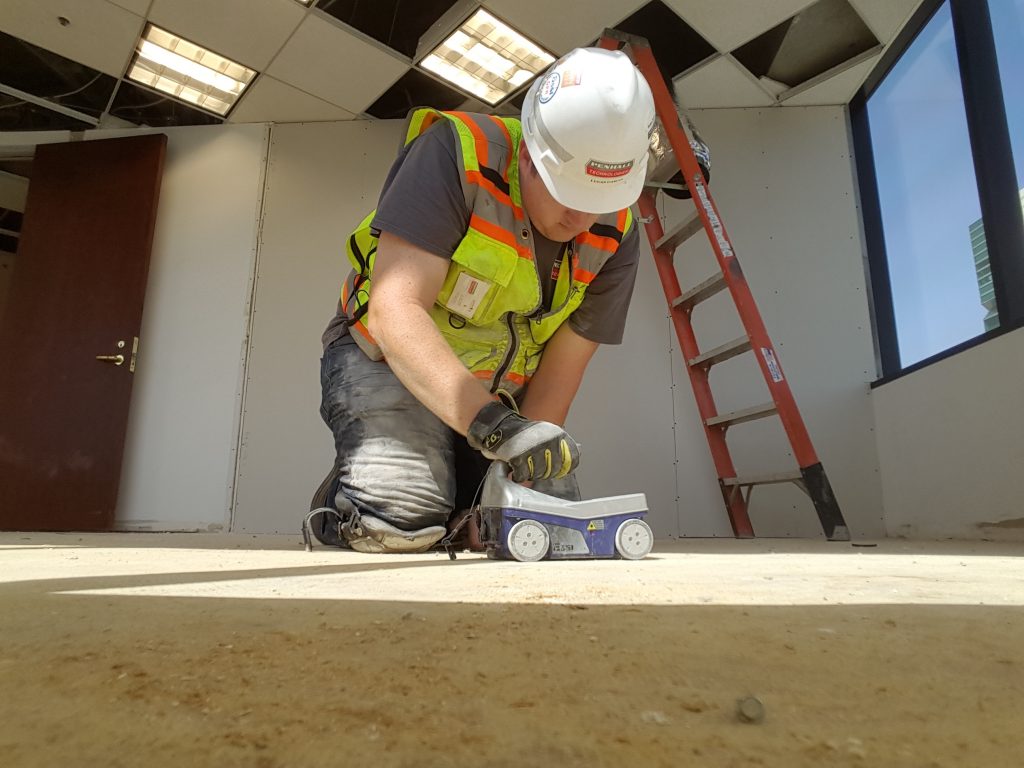Improve Construction Security with Professional Concrete Scanning
Improve Construction Security with Professional Concrete Scanning
Blog Article
Elevate Your Building Process With the Strategic Insights of Concrete Scanning for Enhanced Performance
One such innovation that has reinvented the building and construction sector is concrete scanning. By harnessing the strategic understandings supplied by concrete scanning, building and construction specialists can unlock a realm of improved efficiency and structured processes.

Advantages of Concrete Scanning
Enhancing task effectiveness and safety and security, concrete scanning offers a non-destructive method for identifying concealed objects within concrete frameworks. By making use of innovations such as ground-penetrating radar (GPR) and concrete x-ray imaging, building groups can precisely situate rebar, post-tension cords, electric avenues, and other obstructions prior to boring, reducing, or coring into concrete.
The benefits of concrete scanning are various. Construction websites can be intricate settings, and understanding what exists underneath the surface can protect against injuries and crashes.
Moreover, concrete scanning advertises overall project efficiency by avoiding and improving workflows rework. By determining potential concerns early, teams can change their strategies proactively, conserving time and resources over time. In significance, the fostering of concrete scanning technologies is a strategic investment that pays returns in terms of cost-effectiveness, safety and security, and productivity.
Modern Technology Assimilation for Performance
Concrete scanning's capability to improve process and boost task efficiency can be more optimized via critical combination of advanced modern technologies. By including Building Information Modeling (BIM) software application right into concrete scanning procedures, construction teams can attain a greater level of precision and coordination. BIM permits for the creation of 3D models that give in-depth insights into the project, enabling better decision-making and reducing the probability of mistakes. Additionally, the integration of Enhanced Fact (AR) modern technology with concrete scanning can enhance on-site visualization, permitting job supervisors and employees to overlay electronic info onto the physical setting in real time. This can facilitate extra precise positioning of components and boost interaction amongst employee. Additionally, using drones for aerial studies along with concrete scanning can quicken information collection and evaluation, allowing quicker decision-making and progress tracking. On the whole, the critical assimilation of these technologies can substantially improve performance and performance in building and construction jobs.
Avoiding Expensive Mistakes
Exactly how can careful focus to information during concrete scanning procedures assist building and construction groups in preventing costly errors? By making use of advanced scanning innovations such as Ground Permeating Radar (GPR) and electro-magnetic induction, construction groups can accurately find rebar, energies, spaces, and various other blockages within concrete frameworks. Additionally, concrete scanning assists in making certain architectural honesty by determining weaknesses or problems in the concrete very early on, allowing for prompt repair services and alterations.
Enhancing Project Administration
Careful interest advice to information throughout concrete scanning refines not just helps in preventing costly mistakes but also lays a strong foundation for effective task administration in construction undertakings. By including concrete scanning modern technology right into task monitoring approaches, construction teams can improve process, improve communication, and make certain that projects remain on track.
Concrete scanning provides useful understandings right into the here architectural honesty of existing elements, permitting task supervisors to make enlightened decisions concerning style adjustments or building and construction sequences. This aggressive technique lessens the risk of unforeseen hold-ups or rework, eventually saving time and sources. Furthermore, the information obtained from concrete scanning can be incorporated into Building Information Modeling (BIM) platforms, making it possible for real-time partnership and coordination amongst numerous stakeholders.
Additionally, concrete scanning helps task managers recognize prospective threats or obstacles prior to they intensify into bigger issues, promoting a more secure job setting for all included. With improved presence and accuracy supplied by concrete scanning technology, job supervisors can properly intend, check, and implement building and construction tasks with better efficiency and self-confidence.
Optimizing Productivity
To boost productivity in construction projects, applying efficient techniques and making use of innovative modern technologies is essential. Making best use of efficiency involves enhancing processes, maximizing source allowance, and decreasing downtime. One vital aspect of making the most of productivity is with the adoption of concrete scanning technology. By utilizing ground-penetrating radar (GPR) and various other scanning approaches, building and construction groups can properly situate rebar, conduits, and other subsurface aspects, lessening the danger of pricey errors and hold-ups throughout excavation and exploration.
Additionally, accepting Structure Information Modeling (BIM) software program can dramatically improve efficiency by producing thorough 3D versions that this link improve task visualization and control among various professions. BIM enables better clash detection, making it possible for concerns to be recognized and solved prior to building and construction even starts, conserving time and sources over time.
Implementing a lean construction approach, which concentrates on getting rid of waste and enhancing efficiency across all task phases, is another efficient approach for taking full advantage of efficiency. By cultivating partnership, communication, and constant improvement, building groups can work more cohesively towards attaining job objectives in a efficient and structured way.
Verdict
In final thought, the critical implementation of concrete scanning in the building procedure uses many advantages, consisting of raised performance, price financial savings, boosted job monitoring, and improved efficiency. By integrating this innovation, building groups can stay clear of pricey mistakes, simplify their operations, and optimize their general project output. Concrete scanning is an important device that can elevate the building procedure and bring about even more effective and successful outcomes.

Report this page